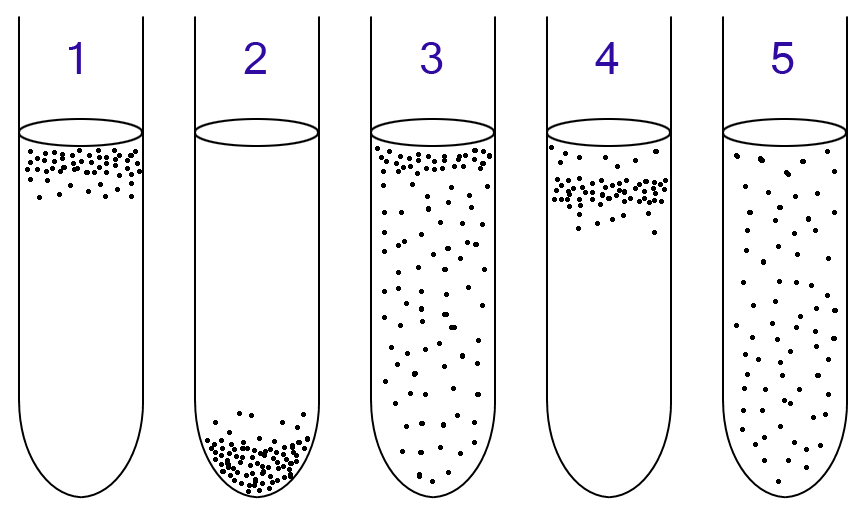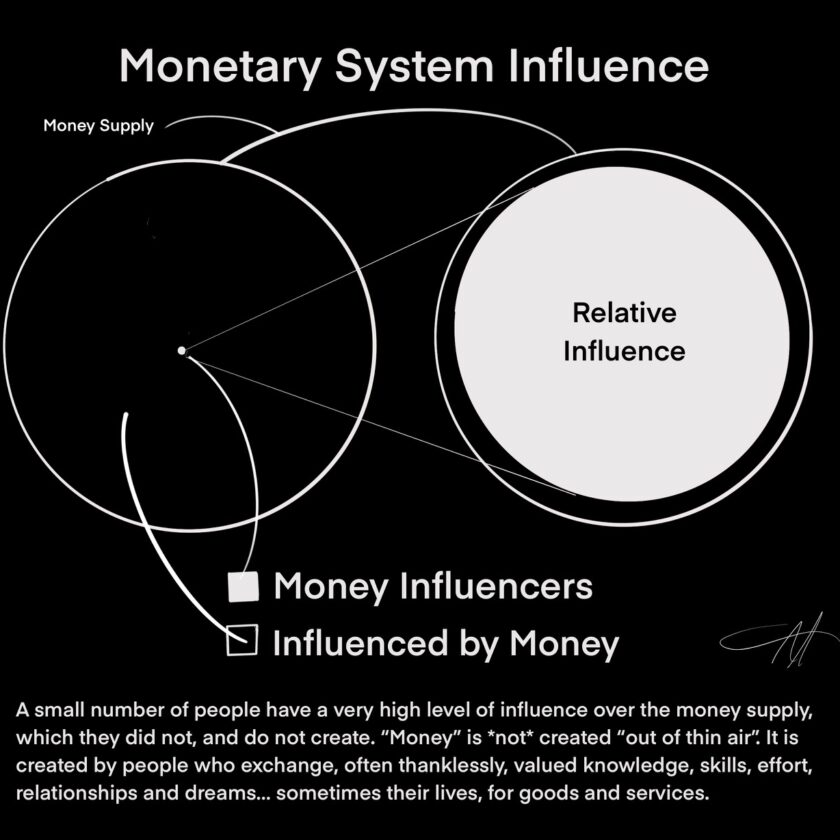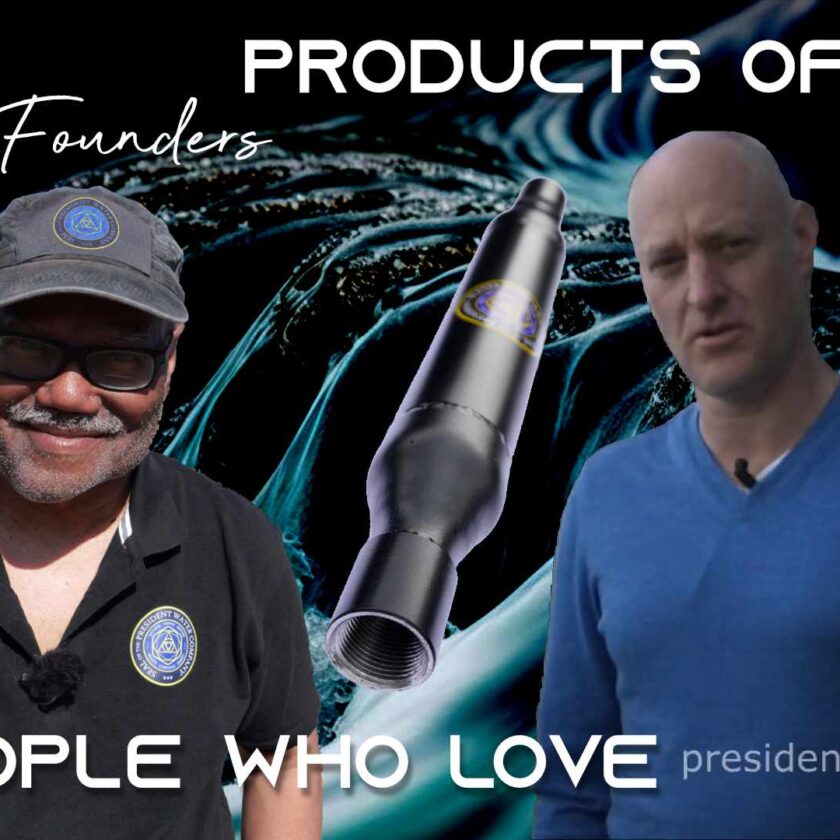
I received a call the other day from a man, we’ll call him Jacob, whose organization sells our vortex generators for water enrichment (under its own name) to farms on the East Coast. He sold a unit to an organic dairy farmer, who we’ll call Paul. After a number of months, Jacob wasn’t getting any love, referrals, or new business, from Paul.
Instead, Paul is bad-mouthing vortex generators, claiming that they didn’t work, and that nothing had changed.

If you’re new to this blog, a vortex generator is a water treatment technology that changes the water passing through by creating a highly accelerative vortex “spin”. Unlike filtration and chemical additives that “eliminate and punish” bad-behaving elements (i.e., filtration or chemicals), vortex generators cause physical and molecular changes in the environment that the water is, while adding to its life-enhancing electrical footprint.
Below is a picture of a unit that we installed recently in a Florida citrus grove, for an 8″ line. They are available to support line sizes from 1/2 in.to 12 in. and larger.

As evidence of the product’s non-effectiveness, Paul told Jacob that E. coli bacteria had not been eliminated from his water source.

To most people, that would be proof enough. We have been conditioned through education since the days of Louis Pasteur, to believe that “germs” are “bad” unto themselves, and that killing or eliminating them was the logical and even ethical solution.
Both the standard supposition and remedy regarding the nature and intent of microorganisms have proven to be wrong, but the idea persists.
Institutionalized policies and practices that were implemented long before Paul’s birth put him between the proverbial “rock and hard place” because, as the owner of an organic dairy, he has to jump through stringent hoops that are dictated by his organic accreditation agency. Those rules are intended to give the public the impression that the best possible product is being produced by member dairies.

The actuality is that a protection scheme is being run, with organic certification proponents asserting that theirs is the best milk there is. Maybe, but with a very big asterisk. We’ll discuss why.
Among many rules and regulations set by an organic certification agency is that there be no E. coli present in his water. The dairy must meet this and other stipulations in order to maintain its Organic status. This is important because maintaining Organic status means commanding a higher price for his milk.
Whether the milk is actually the best produced, or even healthy for people, is another matter altogether. The perception is all that matters. From a healthiness standpoint, organic milk is better than conventional milk.
However, if you ask the direct question of whether “organic” milk is natural, meaning:
- does it have natural microflora (bacteria)?
- does it contain natural enzymes?
- is it enriched with natural vitamin D (a product of direct sunlight exposure)?
The simple, unequivocal and scientifically confirmable answer is “no.”

The milk to which the above attributes apply, is referred to as raw. Raw milk is real milk, and increasingly hard to get, and even harder for a dairy owner to make a living producing this natural product without great risk.
I have had the pleasure of meeting and interviewing Mark McAfee of Organic Pastures near Fresno, California on two occasions.
I respect the process, and the higher level of compliance and expense that organic farmers subject themselves to. It is clearly the best choice that we have available, but the product is being made available at the expense of the public being lied to and dairy owners being forced to reduce the natural, nutritional value of their product in order comply with policies that are designed to extend shelf life and profitability.
This is not the “fault” of the organic dairy farmer. This is another case of gerrymandering by quasi-governmental agencies whose heads have established a fiefdom for themselves at public expense. As it does with other practices that are born of and derived from germ theory, such as vaccinations and chemotherapy, a distracted, ignorant public allows the game to continue, also at its own expense.
Ignorance is not bliss.
Ignorance, yields this.
It’s a big, complex, messy pot. However, I started writing this piece because of the official assumptions about what E. coli is, and the appropriate response.
It’s not flat-out eradication. Never has been.
Unquestioned Official Narratives vs. Known Facts
Here’s what the Centers for Disease Control and Prevention (CDC) says about E. coli:
Escherichia coli (abbreviated as E. coli) are a large and diverse group of bacteria. Although most strains of E. coli are harmless, others can make you sick. Some kinds of E. coli can cause diarrhea, while others cause urinary tract infections, respiratory illness and pneumonia, and other illnesses. Still other kinds of E. coli are used as markers for water contamination—so you might hear about E. coli being found in drinking water, which are not themselves harmful, but indicate the water is contaminated. It does get a bit confusing—even to microbiologists.
This is a modern-day spin on germ theory, where microorganisms are considered to be “good” or “bad” with little consideration given to the beneficial purpose that they serve.
The CDC acknowledges the confusing aspects of the premise, but not its fundamental flaw. The fundamental fact of the matter is that E. coli metabolic activity, and hence, their effect within the organism, is dependent on the environment in which they exist. This one statement applies for any and all strains of all bacteria; indeed, all life.
A key factor to the environmental role in E. coli’s natural place in the grand scheme can be found in the Wikipedia entry on facultative anaerobic organism. The bacterium is represented in the #3 test-tube (shown below) of thioglycolate broth, whose stratified oxygen levels allows the isolation and identification of various bacteria types.
As a facultative bacteria, E. coli is not just “harmless” as the CDC and zientific community would have you think. Under normal circumstances, meaning when there is sufficient oxygen present, the bacteria plays a critical role in adenosine triphosphate (ATP) production. In fact, that is the primary purpose and role of E. coli, via the production of the ATPase enzyme.
The fact is that E. coli is naturally present because it does something that is critical to the maintenance or restoration of health, under the proper circumstances. That’s a bit more significant than the “harmless” moniker that the CDC and other information outlets put on it.
E. coli is neither your friend nor enemy. At issue is the environment in which it exists, and whether a critical element is available in sufficient amounts for it to serve its primary purpose. One of the most critical of critical element is oxygen which, of all the gases in the periodic table, is by far the most paramagnetic.
Whether you know what paramagnetism is or not, consider what effect the decline or withdrawal of oxygen would have on you or any life form, and how immediate that effect would be.
The Oxygen Factor
You also begin to see the importance of E. coli as it is. It has the ability to change its metabolism when oxygen levels get low. This is not without consequence, because the stress of operating in a fermentation metabolic state means that ATPase production stops, and toxic byproducts are now being produced. Why? The microorganism is operating under stress.
I call attention to the paramagnetic properties of oxygen gas in particular, to note the discovery of the connection between the presence or absence of oxygen in the environment and advance or decline of cancer tumors, which netted a Nobel Prize to Dr. Otto Warburg in 1931.

E. coli is not a “disease”. It is a microorganism that has a very specific purpose that is critical to our health. By minimizing that purpose by calling it “harmless” and essentially tolerable, we remain clueless as to how other harmful practices, that have become standardized, are allowed to persist.
Pasteurization of dairy products is just one example, for it kills not only microorganisms in the milk (including E. coli), but the vital enzymes that they produce.
Yet, read the standard line on pasteurization, this one published on the Foodsafety.gov website.
Pasteurization is a process that kills harmful bacteria by heating milk to a specific temperature for a set period of time. Some people continue to believe that pasteurization harms milk and that raw milk is a safe healthier alternative.
Raw milk can harbor dangerous microorganisms, such as Salmonella, E. coli, and Listeria, that can pose serious health risks to you and your family.
I will go ahead and list the other false information that is very specifically being asserted as true on the Food Safety site:
- Raw milk DOES NOT kill dangerous pathogens by itself.
- Pasteurizing milk DOES NOT cause lactose intolerance and allergic reactions. Both raw milk and pasteurized milk can cause allergic reactions in people sensitive to milk proteins.
- Pasteurization DOES NOT reduce milk’s nutritional value.
- Pasteurization DOES NOT mean that it is safe to leave milk out of the refrigerator for extended time, particularly after it has been opened.
- Pasteurization DOES kill harmful bacteria.
- Pasteurization DOES save lives.
Notice the emphasis that they make, as though CAPITALIZING a word means “end of story.” Read their entire story on raw milk by clicking this link.
The “government” agency is also actively publishing false information about raw milk, which is totally designed to discourage adoption, or more likely, discourage public demand that the practice of using chemical additives, under the guise of health, but which is actually to promote unnatural growth, comes to an end.
Again, there is the “sin of omission” in the statement that pasteurization kills “harmful” bacteria. Instead of getting into a pissing contest as to which bacteria is “good” and which is “bad,” there is no question that pasteurization destroys the natural balance (microbial and enzymatic) that, when achieved and maintained, makes milk healthy for both animals and people.
Nature has mechanisms in place to management bacterial populations. It is done via the populations themselves, and facilitated by the environment in which they live. Antibiotics and pasteurization create an environment that is conducive for the microbes that survive them. It is important that the public cares enough to know this information, otherwise change will be slow.
Antibiotic use in dairy milk production (in addition to the use of certain growth hormones), exacerbate a situation that is already way out of balance, and hence, unhealthy. Furthermore, the additives that are given to cows, pigs, and poultry, eventually come up the food chain to affect people.
Antibiotics also make the environment within the animal (or human), more acidic, meaning that available oxygen levels are lowered.
Changes in Water via Vortex is NOT a Question
So I took an exception to Paul’s assertion that the vortex generator “didn’t work”, because it is actually impossible for them not to. They create vortex movement in and by the water itself. The physics that result from that movement is then automatic, which includes electrochemical changes referred to as self- or auto-ionization, which results in the natural generation, from the water itself, of both positively and negatively charged ions.
Also called autodissociation of water, this natural process is why chemical changes happen to water that has been vortexed without the introduction of new chemicals.

If Paul knew that E. coli produce an important enzyme (that also aids critical cellular energy production) when there is oxygen, he wouldn’t have suggested that the vortex generators didn’t work simply because of the ongoing presence.
He might have looked at other markers, such as milk production, butterfat content, incidence of mastitis, etc. Over the years, all of these factors have shown improvements with dairy farmers that have enriched their ground and well water with vortex generators.
The other thing to consider about when E. coli turns “bad.” First of all, it means that the environment itself is oxygen deficient, and you might say that life force is waning. E. coli are under stress, as are the other facultative microorganisms in the system.
The good news is that if the facultative microorganisms like E. coli weren’t present when we had allowed our inner environment to get that way, we’d be dead sooner. If E. coli is under stress and in fermentation, then antibiotics are the last thing a person needs.
We need balance, not silver bullets.






